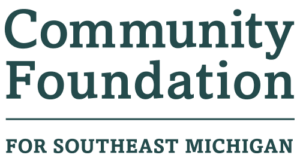
Consider using your individual retirement account (“IRA”) to achieve your charitable giving goals in 2019.
Consider using your individual retirement account (“IRA”) to achieve your charitable giving goals in 2019 and address your IRA planning now to maximize tax savings and your charitable giving. As you plan for yourself, your family, and your charitable causes, keep in mind that while tax rules constantly change, a cash donation to a charitable organization out of your IRA may be an appropriate tool to utilize in accomplishing your charitable planning objectives.
You may remember that the 2017 Tax Cut and Jobs Act (the “2017 Act”) overhauled the tax law, nearly doubling the standard deduction, which is $12,200 for an individual and $24,400 for a married couple in 2019. Last year, many taxpayers filed using the standard deduction, rather than itemizing their deductions for mortgage interest payments, state and local taxes, and charitable gifts. As a charitable contribution is an itemized deduction, most taxpayers will no longer receive the full deduction value for a charitable gift unless all other itemized deductions exceed the standard deduction amount. The 2017 Act also increased the limit on a deduction for a charitable contribution of cash to a charity to 60% of the taxpayer’s adjusted gross income for the year.
While taxpayers continue to adapt to the sweeping tax legislation in 2017, Congress may be throwing another wrench into financial planning by making changes to our retirement system. In late May, the House of Representatives passed the Secure Act, which is currently being taken up in the Senate. As passed by the House, the Secure Act will raise the of the age at which an individual must take distributions from an IRA from 70 ½ to 72. The Secure Act will also take away the ability to “stretch” distributions from an IRA inherited by a child or non-spouse. The stretch IRA has provided non-spouse beneficiaries with years of tax-deferred growth, as they are currently required to take a small distribution each year based on their own life expectancy following the death of the IRA owner. The proposed legislation effectively accelerates tax collection by requiring that the funds be withdrawn, and therefore be subject to tax, within 10 years of the death of the IRA owner. To avoid the tax bite that your beneficiaries may face if Congress passes the Secure Act, and if you have other financial assets you can pass on to your heirs to minimize income tax consequences, you may consider your IRA in your charitable planning.
If you are age 70 ½ or older, you may make cash gifts from your IRA to a charity without having to include the IRA distribution in your taxable income. A qualified charitable distribution, or the so-called IRA charitable rollover allows you to direct all or part of your distribution directly to a charitable organization in an amount up to $100,000 per individual in a single year. Qualified charitable distributions also reduce your taxable estate, which may reduce estate taxes, depending upon the size of your estate and the federal estate tax exemption in effect on your death.
The amount of the charitable distribution is excluded completely from your gross income and is not subject to tax. As it is not deductible, you do not have to worry about itemizing, or deduction limitations governing charitable contributions, or exceeding the standard deduction threshold. If you won’t qualify for a charitable deduction, either because you do not itemize your deductions, or your adjusted gross income is insufficient, you can benefit by giving to charity by taking the standard deduction and a qualified charitable distribution in 2019, excluding the amount donated from your taxable income, unlike a regular withdrawal of your distribution from your IRA.
Keep in mind the following when considering a distribution from your IRA:
- You are eligible if you are age 70½ or older;
- The amount of the charitable distribution may exceed your required minimum distribution;
- An individual is allowed to roll over up to $100,000 each year from his or her IRA ($200,000 for married couples) to a qualified charity;
- The amount distributed is excluded from your taxable income;
- You do not have to itemize your deductions in order to make a distribution; you may take the standard deduction and make a distribution in 2019;
- You can make a distribution to support our flexible endowment or a field of interest fund in an area of interest to you (e.g. arts, early childhood education, youth sports);
- Under the law, distributions to donor-advised funds do not qualify;
- The window closes on December 31, 2019 as the distribution must be taken in the calendar year in which the taxpayer plans on reporting it; and,
- The distribution must be made directly from the IRA to the Community Foundation and can never pass through your bank account.
The Community Foundation can help you plan to make your charitable giving as tax efficient and as impactful as possible to maximize tax savings and carry out your philanthropic objectives. In the coming months, we would be pleased to help you avoid the year-end rush and discuss with you making a qualified charitable distribution to the Community Foundation.

